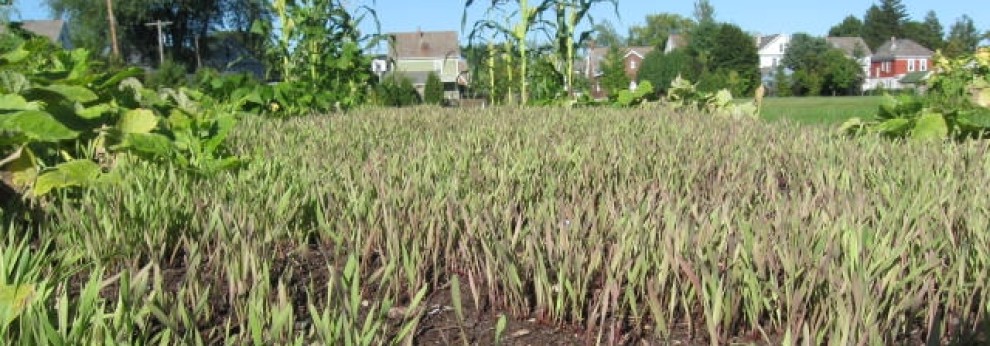Teach a class outdoors and then another back in the regular classroom and the students might well be better focused for the second one. That’s the basic finding of university researchers who describe an experiment with mostly poor and minority third graders in the academic journal Frontiers in Psychology. Ten lessons on a variety of subjects taught by two teachers at a single Illinois school might not be proof positive that moving some teaching and learning outside improves academic performance. But with research conducted by long-time students of the connection between the environment and psychology and coming on top of paper after paper identifying myriad likely health benefits to exposure to nature, development of outdoor classrooms increasingly looks like a valuable educational investment. And research suggests it could be an especially valuable investment where academic results are particularly discouraging.
“Regular contact with nature may be as important to our psychological and social health as the regular consumption of fruit and vegetables is to our physical health,” says Ming Kuo, director of the Landscape and Human Health Laboratory, University of Illinois at Urbana-Champaign. The university lab has been exploring the intersection of access to nature and health for more than 20 years. Kuo, the lead author of the paper about classroom engagement after a lesson in a natural setting, found early on in her work that people in poverty living in public housing with significant nearby vegetation coped better with life’s challenges than people living in similar housing without nearby vegetation. And she and colleagues subsequently reported that vegetation at public housing appeared to produce lower incidence of crime, lower incidence of domestic violence and greater ability among teenage girls to defer gratification.
“Classroom engagement was significantly better after lessons in nature than after their matched counterpart (in traditional classrooms) for four of the five measures developed for this study,” Kuo writes in her latest publication. “This nature advantage held across different teachers and held equally over the initial and final five weeks of lessons. And the magnitude of the advantage was large.”
Research proving in concrete terms that school gardens boost scores on standardized tests is hard to find. And it isn’t typically too difficult to poke holes in the occasional studies that make assertions along those lines. That said, a considerable body of work looking at school gardens and other efforts to bring teaching and learning outdoors paints a picture of great potential in garden and outdoor classroom initiatives. Such research, thus, could be important where academic results are especially discouraging.
Research that might be seen as relevant to the Vegetable Project’s work at Albany schools, and especially its proposal to develop an outdoor classroom at Myers Middle School, mostly fits into one of three groupings: 1) reports that explore connections between gardens and academic performance, 2) reports that seek to determine if there are connections between gardens and fruit and vegetable consumption and 3) reports that make connections between interaction with nature and wellbeing in a most generalized way. The third grouping likely has the broadest implications.
School gardens and academic performance: Pinning down connections between school gardens and educational outcome is challenging, due to the many varied approaches to gardening programs and difficulty in observing large enough samples with appropriate control groups over a long enough time. Some studies, however, point in a positive direction.
Louisiana State University researchers found that a garden-based curriculum boosted science grades in Baton Rouge elementary schools. Researchers compared scores on science tests before and after an experimental group was taught from a Junior Master Gardener curriculum for two weeks over the course of the fall semester while control group classes stayed with traditional classroom teaching. The researchers documented better performance by students in the experimental group classrooms.
In a separate publication, a California- and a Florida-based researcher found that a 10-week garden curriculum and a series of short experiential projects built stronger science process skills – the ability to observe, communicate, compare, order, relate, and infer – among fifth and sixth grader than typical teacher-led instruction.
School gardens and healthy eating: A group of researchers in Minnesota found promising indications that garden-based nutrition programs promote fruit and vegetable consumption, willingness to try fruits and vegetables and ability to identify fruits and vegetables in more than half of 11 studies that they reviewed. In one of the 11, Texas A&M researchers found students eating more fruits and vegetables for snacks after exposure to a garden curriculum. Another of the 11, undertaken by school nutritionists in California, compared fourth graders’ response to nutrition curriculum that involved time in a garden with similar curriculum strictly in the classroom. Researchers found students with garden exposure more likely snack on fruits and vegetables six months after the teaching ended. And yet another of the 11, based on research in Idaho, documented greater consumption of fruits and vegetables among 11- to 13-year-olds whose study of nutrition included time in a garden.
Nature and healthy children: Many and very different investigations, some in educational settings and some elsewhere, suggest that nature may be a powerful force for healthy human development, whether seen as social and emotional health, resiliency, sustained attention or impulse control, each of which would seem to provide critical foundation for success in school. “There is a substantial body of literature demonstrating the cognitive and psychological benefits of natural environment experiences,” says Nancy M. Wells, an environmental psychologist at Cornell.
More narrowly, University of Illinois researchers found that even the sight of trees and natural landscape from classroom windows appears to help students train their attention on school work better than views of barren spaces or classroom walls without windows.
They describe in an academic paper an experiment in which students randomly assigned to classrooms without windows, with windows facing a built space and with windows that opened onto a green space, were monitored for biological indicators of stress and were given tests requiring focus and attention after completing fatiguing assignments. The students who took a break in rooms with a green view handily outperformed the two other groups. School administrators, architects and policy makers interested in building supportive environments for learning should take heed, the article’s authors say.



